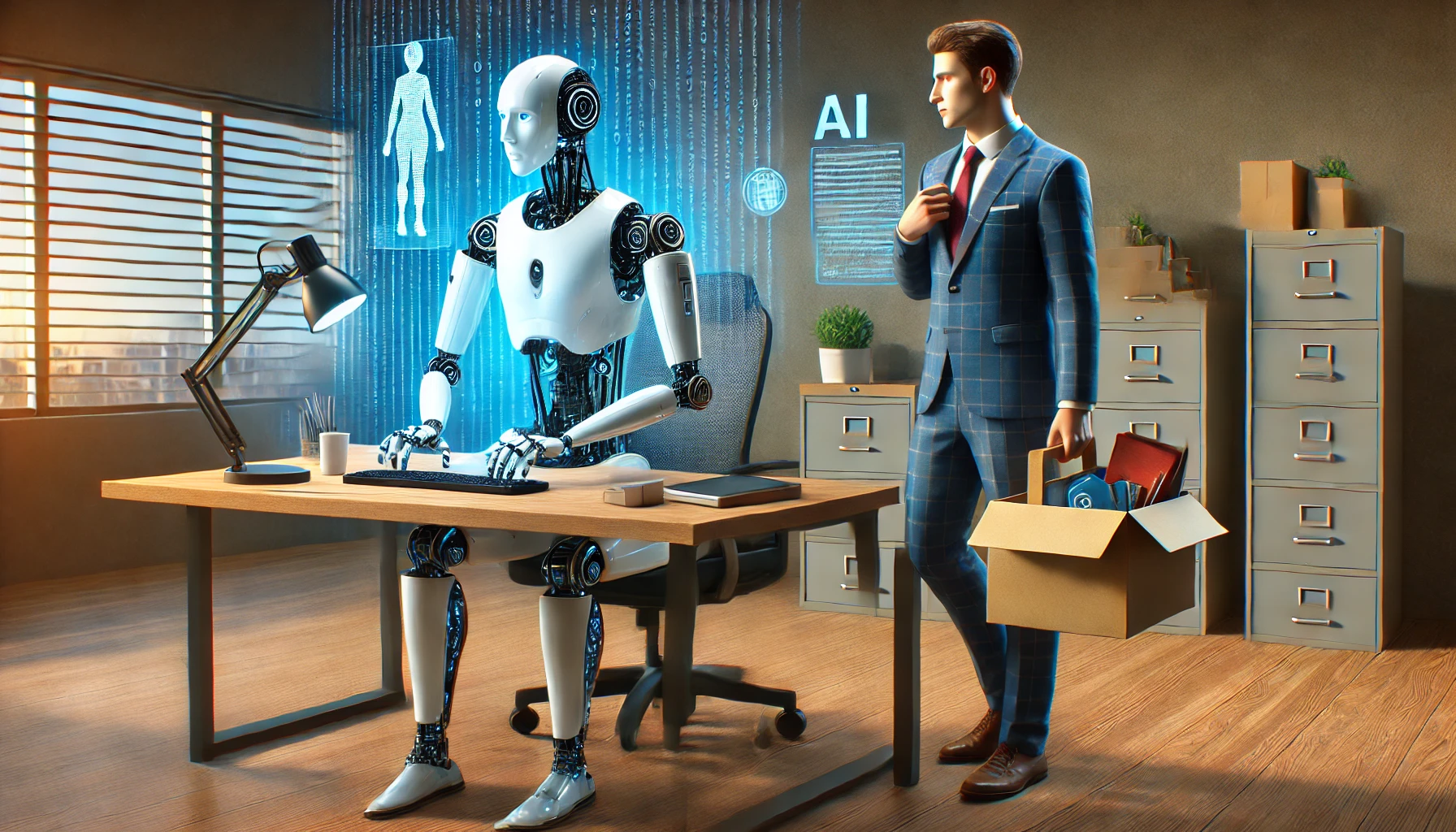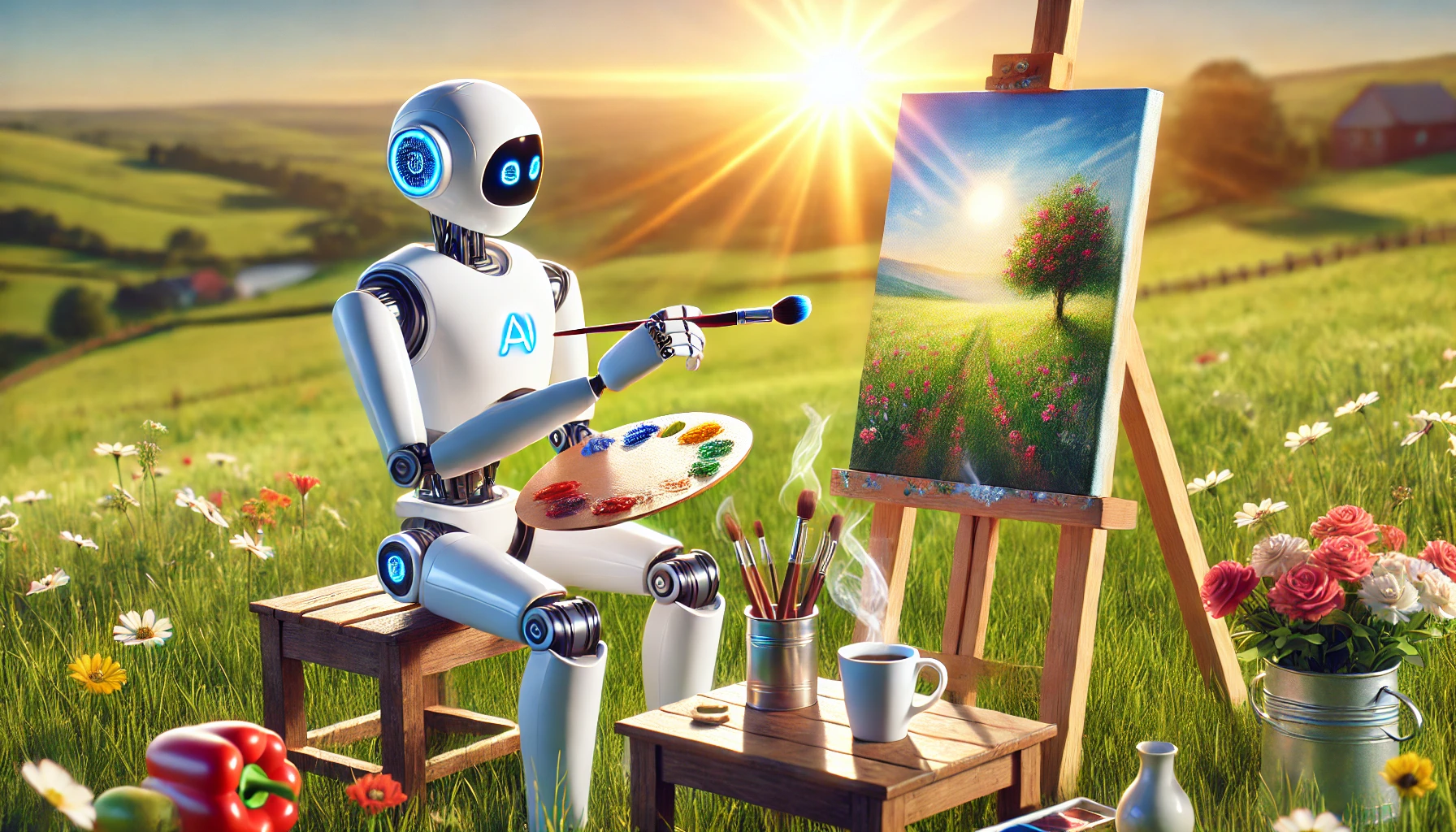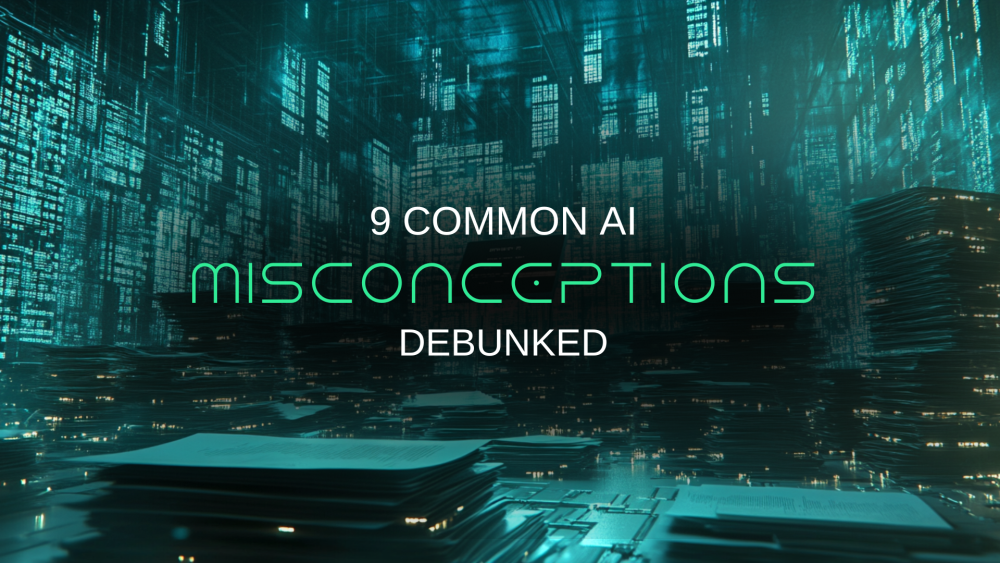9 Common Misconceptions About AI
Rapid tech advancements have sparked myths about job losses and the end of humanity. Sci-fi movies add to the fear by showing robots taking over. You might have heard some of these myths and even believed them.
That's why we made a list of the most common misconceptions about AI and debunked them for you.
1. AI Can Think, Feel, or Talk Like a Human
Despite what sci-fi books and movies show, the AI we use today has no humanity. Even if a conversation with ChatGPT feels real, it's just algorithms processing data. AI works based on data provided by humans. For instance, ChatGPT was trained using online content up until late 2021.
Its creators fed this data into a machine learning program, developing algorithms to understand speech patterns and generate probability-based responses. This training is why conversational AI seems to understand, apologize, or empathize. The algorithms are designed to mimic what a human would likely say in similar situations.
2. AI Will Replace Human Jobs
Technological breakthroughs have often been feared as causing mass unemployment. The World Economic Forum predicts AI will replace 85 million jobs and create 97 million new ones.
The fact is, AI isn't meant to replace humans entirely but to support and enhance our abilities. It automates boring, repetitive tasks, giving people more time to focus on creative and critical work. This allows employees to thrive and adapt to the digital transformation. People are essential for implementing and developing AI tools. Therefore, AI isn't a job killer; it's a job creator.

3. AI Understands Content Like Humans Do
AI engineers use techniques like natural language processing (NLP) and semantic understanding. These techniques help AI understand and interpret normal human speech, including slang. NLP makes AI responses sound more natural to users, but based on data and probability, AI doesn't read or comprehend as humans do.
The MIT-IBM Watson AI Lab and Harvard NLP developed the Giant Language Model Test Room (GLTR) tool that shows how likely AI is to choose certain words based on its training.
4. AI is Only Useful in Tech Industries
AI is helpful in many industries beyond technical sectors and your personal life. Its real-world uses go beyond technical and creative work. Some of these include the following:
- Finding patterns in healthcare data to improve medical diagnoses and drug development.
- Speeding up financial transactions and loan applications.
- Offering travelers 24/7 resources and answers to their questions.
- Helping homeowners manage their heating and cooling systems more efficiently.
- Detecting when maintenance is needed in complex machines.
- Creating educational tools to help students understand new material better.
5. AI Always Makes the Right Decisions
AI is not perfect and can make mistakes. We often expect more from AI than humans because it's seen as very advanced and intelligent. However, AI depends heavily on the data it's trained on. The AI can produce inaccurate or biased results if this data has errors or biases.
In addition, AI can't make moral or ethical decisions like humans. It only makes decisions based on the data and rules set by people, so it lacks empathy, intuition, and common sense.
6. AI Cannot be Creative
Many people think AI isn't creative, but that's not true. AI technology has produced many new and valuable ideas. While AI isn't autonomous, it can be creative when combined with human intuition and understanding. Examples of AI creativity include designing engines, developing pharmaceuticals, and creating computer art.
For instance, artist Harold Cohen's computer program AARON creates original art. Cohen even says AARON is better at choosing colors than he is. However, Cohen must add new styles or images, so it's not completely human-free creativity.

7. AI is Only for Technically Skilled People
AI is becoming more accessible to everyone. There's a common belief that AI is only for computer scientists and tech experts. However, AI tools and platforms are becoming more user-friendly and accessible to people from all backgrounds. Many companies offer AI-driven tools that require little to no programming knowledge.
For instance, tools like Google’s AutoML allow users to build machine learning models with a simple interface. Businesses can leverage AI for tasks like customer service, data analysis, and marketing without a deep understanding of the technology. This democratization of AI is enabling more people to benefit from its capabilities.
8. AI is Free of Bias
One of the biggest misconceptions is that AI is completely objective. However, AI systems learn from data created by humans, and this data can contain biases. The AI system will likely produce biased outcomes if the data is biased.
For example, facial recognition systems have been shown to have higher error rates for people with darker skin tones. This happens because the data used to train these systems often lacks diversity. To combat this, researchers and developers must ensure diverse and representative datasets and actively work to mitigate bias.
9. AI Will Take Over the World
AI is a tool that requires human guidance and ethical considerations. The idea of AI taking over the world is a popular theme in science fiction, but it's not grounded in reality. AI systems require human guidance, maintenance, and ethical considerations to function effectively and safely.
Researchers, policymakers, and society at large must set the boundaries and rules for AI use. Ethical AI development focuses on ensuring transparency, accountability, and fairness.
We can harness AI's potential while mitigating risks by establishing these principles.
For example, despite decades of investment and $100 billion spent by companies like General Motors, Ford, and Tesla, self-driving cars aren't yet ready for the mass market. They mostly operate in the sun belt because they can't handle complex weather. They also struggle with construction, animals, traffic cones, and crossing guards.

Why Debunking AI Myths is Crucial
Understanding and debunking AI myths is crucial for several reasons. Misinformation can lead to unnecessary fear, unrealistic expectations, and missed opportunities. Here's why setting the record straight is so important:
- Informed Decisions: Accurate information helps individuals, businesses, and policymakers make better choices about AI use.
- Reducing Fear: Clearing up misconceptions alleviates unnecessary fears about AI.
- Encouraging Innovation: Understanding AI’s true capabilities sparks creative problem-solving.
- Promoting Collaboration: Correct information fosters a mindset where humans and AI work together effectively.
- Ethical Development: Recognizing AI's limits ensures fair and transparent development.
- Economic Benefits: Accurate knowledge helps businesses improve efficiency and create new job opportunities.
- Building Trust: Debunking myths builds public trust in AI technologies.
- Balanced Policies: Understanding AI helps policymakers create regulations that protect citizens without stifling innovation.
Final Thoughts
While AI is a powerful tool with incredible potential, it is important to separate fact from fiction. Understanding what AI can and cannot do helps us appreciate its true capabilities without falling for myths and misconceptions. AI enhances human abilities, creates new job opportunities, and provides innovative solutions across various industries.
By learning to work alongside AI and being mindful of its limitations, we can harness its power to improve our lives and society. Remember, AI is here to assist and augment our efforts, not replace or outsmart us.





